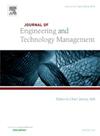地域集群与联盟资源对企业创新的差异效应:企业技术能力的调节作用
IF 3.9
3区 管理学
Q2 BUSINESS
Journal of Engineering and Technology Management
Pub Date : 2025-07-01
DOI:10.1016/j.jengtecman.2025.101901
引用次数: 0
摘要
在本研究中,我们关注了企业外部知识的两个重要来源——地理集群和战略联盟,并考察了企业的技术能力是否以不同的方式影响这两个知识来源对企业创新绩效的有效性。我们认为集群和联盟的知识流动机制不同,导致内部技术能力的作用不同。具体而言,我们认为企业的能力对于从集群中吸收和整合知识更为重要,集群中的信息通过非正式渠道以碎片化的形式流动。此外,由于集群中知识流动的性质和模式,企业对知识损失的关注程度较低。相反,在知识流动更加整合和结构化的联盟中,有技术能力的公司通常更关心知识损失,这会对互惠产生不利影响,从而影响伙伴之间的知识流动。此外,由于联盟中的知识是通过结构化机制转移的,因此,高内部能力在吸收和整合伙伴知识方面的优势变得不那么显著。利用美国半导体行业15年的纵向数据,我们发现,技术实力较强的公司在提高创新价值方面从集群中获得了更大的创新收益。半导体行业以创新、战略联盟和集群趋势为特征。相比之下,技术较弱的公司从战略联盟中获益更多。总体而言,我们的研究支持了我们的假设,并提供了对内部技术能力在利用集群与联盟的外部知识方面的不同运作方式的细致理解。本文章由计算机程序翻译,如有差异,请以英文原文为准。
Differential effects of geographic-cluster and alliance resources on firm innovation: The moderating role of firm technological capability
In this study, we focus on two significant sources of a firm’s external knowledge—geographic clusters and strategic alliances—and examine whether a firm’s technological capability influences the effectiveness of these two sources of knowledge for firm innovation performance in different ways. We theorize that clusters and alliances differ in their knowledge flow mechanisms, leading to varying roles of internal technological capability. Specifically, we argue that a firm’s capability is more crucial for absorbing and integrating knowledge from clusters, where information flows in a fragmented form through informal channels. Furthermore, firms are less concerned about knowledge loss due to the nature and pattern of knowledge flows in clusters. In contrast, in alliances, where knowledge flow is more integrated and structured, technologically capable firms are generally more concerned about knowledge loss, which adversely affects reciprocity and, consequently, the flow of knowledge between partners. Moreover, since knowledge in alliances is transferred through structured mechanisms, the advantages of high internal capability in absorbing and integrating partner knowledge become less significant. Using 15 years of longitudinal data from the U.S. semiconductor industry—a sector characterized by innovation, strategic alliances, and clustering tendencies—we find that technologically stronger firms derive greater innovation benefits from clusters in enhancing the value of their innovations. In contrast, technologically weaker firms gain more from strategic alliances. Overall, our study supports our hypotheses and provides a nuanced understanding of how internal technological capability operates differently in leveraging external knowledge from clusters versus alliances.
求助全文
通过发布文献求助,成功后即可免费获取论文全文。
去求助
来源期刊
CiteScore
8.00
自引率
6.20%
发文量
29
审稿时长
>12 weeks
期刊介绍:
The Journal of Engineering and Technology Management (JET-M) is an international scholarly refereed research journal which aims to promote the theory and practice of technology, innovation, and engineering management.
The journal links engineering, science, and management disciplines. It addresses the issues involved in the planning, development, and implementation of technological capabilities to shape and accomplish the strategic and operational objectives of an organization. It covers not only R&D management, but also the entire spectrum of managerial concerns in technology-based organizations. This includes issues relating to new product development, human resource management, innovation process management, project management, technological fusion, marketing, technological forecasting and strategic planning.
The journal provides an interface between technology and other corporate functions, such as R&D, marketing, manufacturing and administration. Its ultimate goal is to make a profound contribution to theory development, research and practice by serving as a leading forum for the publication of scholarly research on all aspects of technology, innovation, and engineering management.

 求助内容:
求助内容: 应助结果提醒方式:
应助结果提醒方式:


